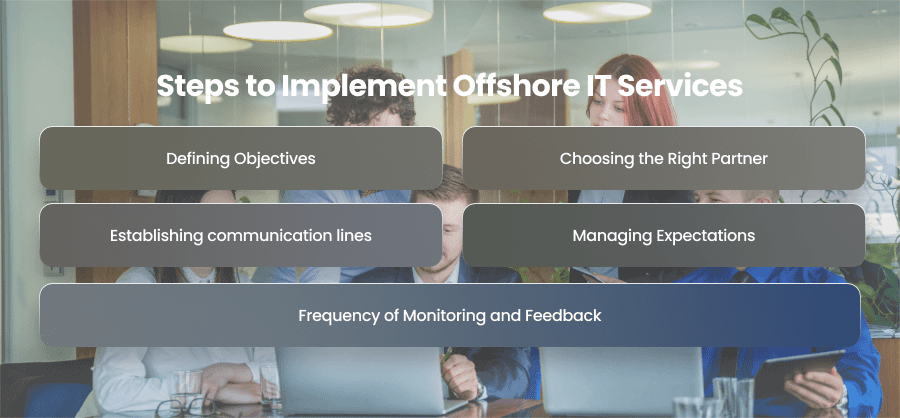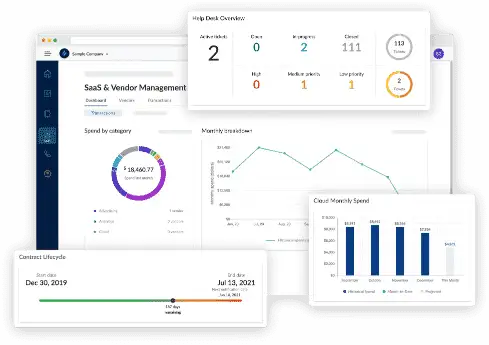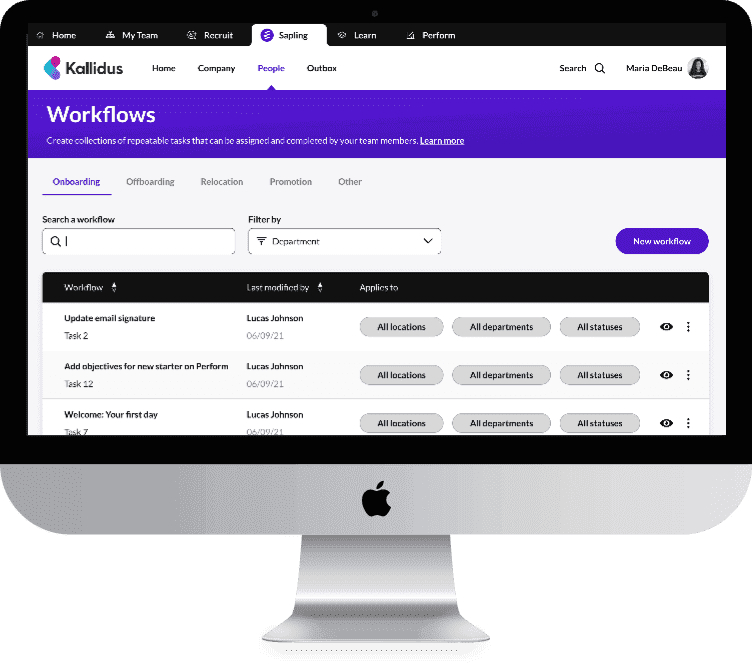Gone is the time when people were used to getting work done by standing over someone every time. It is the 21st century and the ways of working have been modernized. Project management tools and other innovative ways have been introduced to maximize efficiency and reduce costs.
Similarly is with the development industry. Days passed when people were hired for in-house teams for projects. Now, offshore development has emerged as a revolutionary strategy that enables IT businesses to access global talent while staying in their time zones and demography.
This engaging guide will unveil the magic of offshore development, will help you understand its cost-effectiveness, and its future potential which is knocking at the door.
What is Offshore Development?

Let’s have a short view of what offshore IT development is and what are its features.
Offshore development involves software development, IT processes, or other tech-related functions that are handed over to a team residing in a different country.
Individuals, companies, and big businesses opt for this model to save costs and get experienced labor for their projects.
Key Features of Offshore IT Services
- Remote collaboration with outside teams for seamless development.
- Access to the professional workforce with specialized skills and expertise.
- Save huge costs in salaries and infrastructure.
Popular Offshore IT Destinations
Some of the popular offshore locations for development include:
- India
- Pakistan
- Bangladesh
- Eastern Europe
- Southeast Asia
All these locations are renowned for their large IT talent pool and cost-effective services. Moreover, Western people often prefer Eastern Europe as it has cultural compatibility and high technical expertise.
Benefits of Offshore Remote Development

1. Cost Savings
Offshore regions have a relatively lower cost of labor than the developed countries of the world. Offshore solutions mean that companies save money on salaries, office space, and other employee benefits.
2. Access to Global Talent
Offshore IT services opens the doors for a huge talent pool with diverse skills, especially in areas like software development outsourcing, where local skills might be lacking.
3. Scalability
It is also easy for businesses to hire or let go of workers depending on the project’s needs, thus, no long-term obligations.
4. Focus on Core Business
Outsourcing of specialized tasks to offshore teams means that the companies can focus on their core business and stimulate development.
5. 24/7 Operations
Since teams may be located in different time zones, companies get to enjoy round-the-clock working cycles and faster project completion.
Key Considerations Before Choosing Offshore Software Development

1. Assess Business Needs and Goals
Know your needs and requirements and decide if the offshore model fits your goals.
2. Budgeting and Cost Analysis
Although outsourcing offshore services is cheaper, the cost should be compared to the benefits to avoid hidden costs.
3. Cultural and Language Differences
Language barriers and cultural differences may indeed pose a problem in the process of working together. The gaps can be closed through frequent training sessions and cultural awareness seminars.
4. Technical Knowledge and Domain Knowledge
Assess the technical skills and experience of offshore teams to determine if they meet your needs.
5. Legal Considerations
The risks should be managed by focusing on data privacy, protection of intellectual property, and adherence to international laws.
Steps to Implement Offshore IT Services

Software development outsourcing can be effective and efficient when the right structures are put in place to deliver specific results. Here is a brief information on the procedures followed in the process.
1. Defining Objectives
The goals are the foundation of any offshore development project. Lack of goals is dangerous because it leads to the inefficiency and misalignment of projects.
- Set Goals: Determine what the business wants to accomplish, for example, lowering costs, shortening time to market, or gaining certain experience.
- Outline Deliverables: Be specific when defining expected outcomes, for instance, finished software applications, modules, or maintenance.
- Establish KPIs: The measures that may be adopted could include on-time delivery, defects, and cost.
- Align Teams: Ensure that all the stakeholders, the internal and external ones, know what is expected of them and vice versa.
Clear objectives are important because they make it possible to have every choice made in line with the overall business strategy.
2. Choosing the Right Partner
The most critical and deciding factor in offshore model is your offshore partner. For this, you must follow the given points.
- Research Expertise: Seek vendors that have previous involvement in areas such as IT staff augmentation or software development outsourcing.
- Review Case Studies: Check their portfolio to determine their competence and previous performance.
- Assess Reputation: Look at what clients are saying and what they are posting online to determine if they are reliable.
- Consider Location Benefits: Consider such aspects as time differences, language barriers, and costs.
- Review Legal Compliance: Make sure that the partner complies with all the intellectual property laws and data protection laws.
The right partner can be a real asset for your project.
3. Establishing communication lines
Offshore outsourcing is characterized by geographical and cultural differences, therefore, communication is critical in managing such differences.
- Select Tools: Collaboration tools include Slack, zoom, and Jira for communication and work assignments and tracking.
- Establish Protocols: Determine how frequently to meet, in what format to report, and when to escalate.
- Document Decisions: Make and keep records of all important conversations and decisions to avoid confusion.
- Assign Points of Contact: Assign individuals for certain roles to ensure that communication is easier between them.
Effective communication guarantees that organizations are accountable for their actions.
4. Managing Expectations
When expectations are clear, the offshore and onshore teams are set up in a way that fosters cooperation.
- Set Realistic Timelines: Explain for the project, the factors that might complicate the project and the challenges that might be encountered.
- Define Milestones: Divide the project into segments that can be quantified and then deliver them in stages.
- Clarify Roles: Make sure that roles are defined well so that no two people are doing the same thing or there are gaps in the work being done.
- Adapt to Changes: Scope flexibility is required but should be done transparently.
This way expectations do not clash and progress is maintained throughout the process.
5. Frequency of Monitoring and Feedback
This is because monitoring and feedback mechanisms are used to check that the project is on course and that quality is not compromised.
- Review Performance: To monitor the progress towards the achievement of the set KPIs, it is advisable to use analytics tools and resolve emerging problems.
- Quality Assurance: Make sure that deliverables are reviewed at some frequency to check that they meet the agreed-upon quality standards.
- Encourage Feedback: Promote healthy communication among employees in the workplace.
This way, important processes are constantly checked and improved, while the quality is kept at a high level.
Thus, the outlined steps will help businesses to reap the advantages of offshore development while minimizing the risks.
Common Challenges and How to Overcome Them
1. Communication Barriers
To tackle the communication barrier issue, you must Hire bilingual professionals or use translation tools to enhance understanding. Regular meetings help reinforce alignment.
2. Time Zone Differences
Resolving time zone issues is not a big deal. All you have to do is schedule overlapping work hours and use tools like shared calendars to manage time effectively.
3. Quality Control
Implement robust quality assurance practices and establish clear standards for deliverables.
4. Building Trust
Solution: Maintain transparency in contracts and foster relationships through consistent communication and on-site visits.
Cost-Effective Practices in Outsource Development
Leverage Agile Methodologies
While you work with offshore teams, ensure to use Agile frameworks for smooth and efficient workflows and adaptability to changes.
Prioritize Transparency
Before starting work with outsourced teams, conduct a comprehensive meeting and have open communication about costs and deliverables. Doing this prevents misunderstanding and builds a strong relationship.
Use Project Management Tools
Project management is very important during the software development process. It is a common tradition to have a project manager for your team that manages the team efficiently and ensures there are no conflicts.
However, at present, there are project management tools like Trello, Jira, and Asana that assist in tracking the progress and managing resources effectively.
Train Offshore Teams
When you hire offshore teams, you must train them according to your norms and implement strategies that make them a core part of your company or team. Moreover, it is also good for you as they will be able to follow the company standards and meet your expectations.
When to Choose Offshore Contracting for IT Services

- Budget Constraints
Software outsourcing is a cost-effective strategy because it gives a chance to employ experienced specialists at lower prices. It eliminates the expenses on salaries, infrastructure, and employee benefits while guaranteeing quality work to organizations that are looking to cut down their operating expenses.
- Lack of Local Expertise
When specific technical expertise is unavailable locally, offshore services provides access to global talent. Professionals skilled in advanced domains like AI, blockchain, and cloud computing bridge skill gaps, enabling businesses to complete complex projects efficiently.
- Tight Deadlines and Fast Project Turnaround
For time-sensitive projects, offshore teams in different time zones ensure 24/7 operations. Continuous work cycles allow faster execution and high-quality results, keeping businesses competitive without compromising on deadlines or deliverables.
- Need for Scalability
It is flexible, and companies can easily hire more or fewer people depending on the project requirements. This makes it possible to optimize resource usage, especially for start-ups and organizations where workload is unpredictable.
- Focus on Core Business Functions
Offshore workers can be hired for non-strategic jobs because it is a good idea for businesses to focus on their core competencies. Hence, outsourcing functions such as software development are advantageous to bring innovation, enhance customer relations, and realize tactical objectives.
- Long-Term Cost Efficiency
Moreover, it provides the advantage of consistent cost savings in long-term projects which are free from overheads such as rent, electricity, and other employee benefits. This model is continually effective in maintaining ongoing requirements like IT staff augmentation at an optimal cost.
- Limited Resources for In-House Teams
Initially, startups or companies short of budget need to follow strategies that give them more flexibility in less hassle. For this, offshore software development is the best bid that won’t demand infrastructure or resources to maintain your in-house teams. This ensures project continuity and access to professional expertise without significant overhead.
Future of Software Outsourcing to Offshore Areas
The future of offshore IT services is very bright. AI, automation, and IT staff augmentation are assisting in streamlining the processes and improving efficiency and accuracy for offshore operations.
Moreover, hybrid models come into play where onshore and offshore teams can be combined for increased productivity and efficiency for IT projects.
Ending Notes
Offshore software development is not only a way to save some dollars; it is an effective business strategy that is gradually evolving into one of the most important priorities for companies all over the world. Different companies and organizations including startups, entrepreneurs, and large-scale businesses turn to offshore models to solve their development issues and get full solutions.
Moreover, it opens new opportunities and helps your business scale efficiently while focusing on core growth areas. So, if you are looking for offshore development services, look no further than CodingCops as we can be your perfect partners.



















